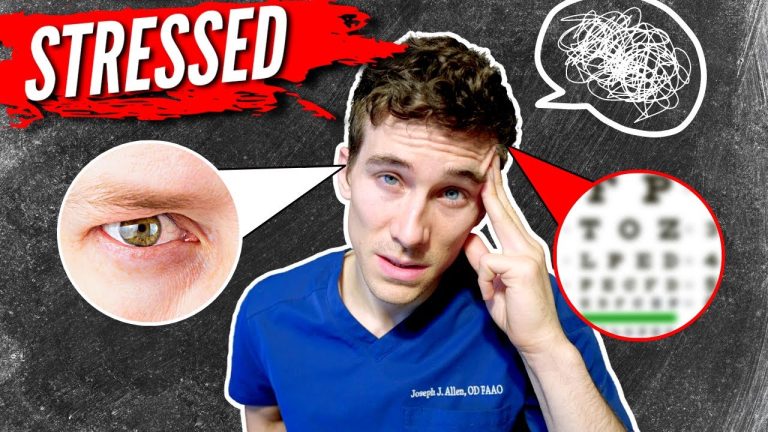Seeing Clearly with Halos: A Guide to Understanding and Managing This Visual Phenomenon
Halos are an optical phenomenon that can be observed by people with certain visual conditions or under specific circumstances. They appear as a bright ring or circle around a light source, which can be distracting or even impair vision in some cases. Halos are often associated with cataracts, glaucoma, or corneal irregularities, but they can also be a side effect of refractive surgery or contact lens use.
For many people, halos are a minor inconvenience that does not affect their daily activities significantly. However, for those who experience severe halos or other symptoms, seeking professional advice and treatment is important to avoid complications or further deterioration of their visual acuity. In this article, we will explore the causes and treatments for halos, as well as some tips to alleviate their effects on your vision and lifestyle.
What Causes Halos?
Halos are caused by the diffraction or scattering of light as it passes through the eye’s lens or cornea. Normally, the lens and cornea refract light rays precisely onto the retina, creating a sharp and clear image. However, when the shape or transparency of these structures is altered, due to age, disease, or trauma, the light rays can be dispersed in multiple directions, creating a halo around the light source.
Cataracts
Cataracts are one of the most common causes of halos, especially in older adults. A cataract is a clouding of the natural lens of the eye, which can distort and scatter light, causing blurry vision, glare, and halos around lights. Cataracts can be treated with surgery, which involves replacing the cloudy lens with an artificial implant that restores clear vision and eliminates halos.
Glaucoma
Glaucoma is a progressive eye disease that damages the optic nerve and can lead to vision loss if not treated early. Glaucoma can cause halos around lights, especially in the late stages, when the field of view narrows and peripheral vision is affected. Glaucoma can be managed with medication, laser therapy, or surgery, depending on the severity and progression of the disease.
Refractive Surgery
Refractive surgery, such as LASIK, PRK, or SMILE, can correct refractive errors, such as myopia, hyperopia, or astigmatism, by reshaping the cornea with a laser. However, some patients may experience halos, glare, or starbursts around lights after the procedure, especially at night or in low-light conditions. These side effects are usually temporary and resolve within a few weeks, but in rare cases, they can persist or require additional treatment.
How to Treat Halos?
The treatment for halos depends on the underlying cause and severity of the condition. In many cases, improving your vision with corrective lenses, such as glasses or contact lenses, can reduce or eliminate halos. However, if the halos are caused by a medical condition, such as cataracts or glaucoma, treating the condition is crucial to prevent further damage and restore clear vision.
Cataract Surgery
Cataract surgery is the most effective treatment for halos caused by cataracts. The procedure involves removing the cloudy lens and replacing it with an intraocular lens (IOL), which can correct your refractive error and eliminate the halos around lights. There are different types of IOLs available, including multifocal, toric, or extended-depth-of-focus (EDOF) lenses, which can provide additional benefits, such as reducing dependency on glasses or improving contrast sensitivity.
Glaucoma Treatment
Glaucoma treatment aims to lower intraocular pressure (IOP) and prevent further damage to the optic nerve. Depending on the type and stage of glaucoma, your eye doctor may recommend eye drops, laser trabeculoplasty, trabeculectomy, or other procedures to control IOP and reduce halos and other symptoms. It is important to follow your doctor’s instructions and attend regular eye exams to monitor your condition and adjust your treatment as needed.
Tips to Alleviate Halos
If you experience halos, there are some tips that can help you cope with the condition and prevent discomfort or accidents. Here are some of them:
- Use artificial tears or lubricating drops to moisten your eyes and reduce dryness or irritation
- Avoid driving or operating machinery at night or in low-light conditions, when halos can be more distracting and impair your vision
- Choose bright and uniform lighting in your home or workplace, to reduce contrast and minimize halos around individual lights
- Wear polarized sunglasses or lenses that reduce glare and light scattering, especially when outdoors or around reflective surfaces
- Take care of your overall health and wellness, by eating a balanced diet, exercising regularly, and getting enough sleep and rest
If you have any concerns or questions about halos or other vision problems, don’t hesitate to contact your eye doctor or optometrist for advice and guidance. With proper care and treatment, you can maintain clear, comfortable, and healthy vision, and enjoy your daily activities and hobbies with confidence and clarity.
Contents
Most wanted in Hoya Vision:
Hoya Lens Engravings
What brand lenses does Costco use?
Which lens is better Alcon or Johnson and Johnson?
What’s the rarest eye color?
Legacy Eye Care Llc
What’s the difference between 1.5 and 1.6 lenses?
Hoya Sensity Vs Transitions Xtractive
Should eyeglasses cover eyebrows?
Wide Corridor Progressive Lenses
1.53 Trivex Impact Resistant
















